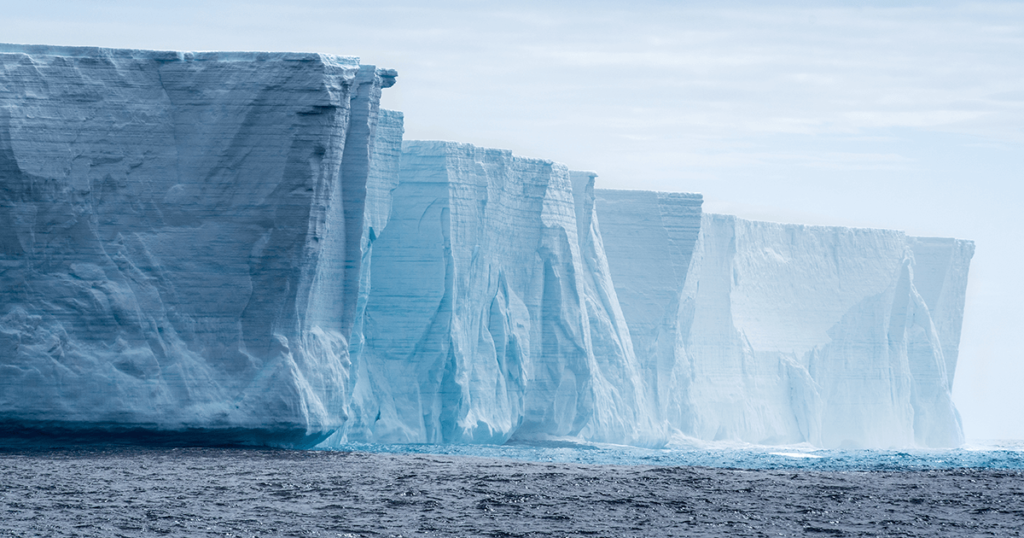

Elizabeth Rush, the author of Rising: Dispatches from the New American Shore, a finalist for the Pulitzer Prize in General Nonfiction, has written for The New York Times, Harper’s, and The New Republic. In 2019, she served as the Antarctic artist and writer for the National Science Foundation, accompanying a team of scientists on a research trip to the remote Thwaites Glacier. We asked her to pose four questions about the future of Antarctica.
1. Starting in the late ’80s, glaciologists began calculating whether Antarctica was gaining or losing mass. They concluded that the southernmost continent was the epitome of stability. But in the intervening three decades, the scales have started to tip, and what was once considered one of the steadiest environments in the cryosphere is now steadily losing ice, especially in West Antarctica.
This is, in part, because the majority of West Antarctica’s ice sheet rests on land well below sea level. Today, warm bottom water is working its way under the region’s two most important glaciers, Pine Island and Thwaites, and melting them from beneath, destabilizing the ice sheets they have long held in place. As these glaciers disintegrate, how much of their ice will break off into the ocean, and how much will sea levels rise as a result?
2. This past winter, I sailed aboard the R/V Nathaniel B. Palmer with a team of scientists studying the Thwaites Glacier. Our mission, part of a five-year collaboration funded through the National Science Foundation and the British Antarctic Survey, was to gather data that would help us better understand the interaction between the ocean and the ice. While working in an unnamed bay right in front of Thwaites, we witnessed a massive calving event. Over the course of a couple of days, a 25-mile-wide, 15-mile-deep chunk of the Thwaites ice shelf collapsed right before our eyes, breaking into hundreds of icebergs that floated out into the Amundsen Sea. We use the phrase “to move at a glacial pace” to emphasize a mind-numbing slowness, but this phrase no longer describes the physical world. Will Antarctica’s glaciers retreat even faster than predicted by current models, faster than we are capable of responding to with adaptive measures like sea walls and raised infrastructure?
3. For most of human history, Antarctica was just an idea in our minds: a strange amorphous shape or a blank space at the bottom of our maps. There are no indigenous inhabitants, no traditional knowledge to help us gauge how profoundly the continent is transforming. The next best thing we have is long-term data sets, which are few and far between because of the prohibitive cost of conducting research in such a remote location. “Imagine going to the funders and saying, ‘I want to have a million dollars to extend a time series from 13 to 15 years. Can you please give me that?’ They are just going to laugh at you,” Anna Wåhlin, a professor of oceanography at the University of Gothenburg, recently told me. As Antarctica continues to twist into new and unusual shapes, will we prioritize funding for the data necessary to make informed public policy decisions about climate change adaptation?
4. Antarctic science has long been dominated by men. The tales we tell about exploration and research in the great southlands emphasize traditionally masculine characteristics like heroism, strength, conquest, toughness, and resolve. But just as Antarctica is transforming, so is the gender of those who study it. How will having more women on the frontlines of Antarctic science change not only the gender balance aboard the vessels and in the stations, but the very stories we tell about a place we know so little about?

